There’s something undeniably invigorating about hiking alone. Trust me, I know – the tranquility and self-reliance that come with solo treks are unparalleled, but they also demand an amplified level of readiness and caution.
So, let’s make sure you’re equipped for the journey. This blog post is your trusty guide to navigating safe and fulfilling lone hikes. It shares a well-thought-out list of 13 essential tips – a medley of my own trail-tested experiences and meticulous research.
Are you set to stride into the wilderness confidently? Let’s embark on this enlightening exploration towards becoming adept solo explorers together.
Key Takeaways
- Let someone know your hiking plans and the trail you’ll be on to stay safe.
- Choose well – known and busy trails for a safer solo hike.
- Research the route, wildlife, and check weather conditions before heading out.
- Use navigation aids like a compass or GPS device to stay on track.
- Pack enough food, water, appropriate clothing, and an emergency kit for unexpected situations.
- Stay within your comfort zone and know your limits while hiking alone.
- Routinely check surroundings and avoid listening to music for better awareness.
- Solo hiking offers independence, freedom, character – building, new skills development, and a deeper connection with nature.
Importance of Hiking Alone Safety
Hiking alone can be an incredible experience, but it’s crucial to prioritize safety.
Let someone know your hiking plans
Before I set off on a hike alone, I always share my plans. Sharing what trail I’m using and when I’ll be back helps keep me safe. A family member or good friend is who you should tell.
Being clear where you are going and how long it will take can help search teams find you if something goes wrong. This builds a trusty safety net around your trip, making hiking alone less risky for me and letting my loved ones know where to look if needed.
Choose well-known and frequented trails
I always pick well-known and busy trails for my hikes. They are easy to follow, so I don’t worry about getting lost. Many other people walk on these paths too. This makes me feel safe when I am hiking alone.
These trails are also well-kept. You can see clear signs and markers along the way. The path is smooth with no big rocks or roots to trip over. There are even seats and rest spots at some points on the trail!
Research the route and be aware of wildlife
Before you go on a solo hike, it’s smart to study your path. Knowing the route makes hiking safer. Learn about any animals that live where you will be hiking. This helps you if you meet an animal while on your walk.
Some places have bears or snakes that can hurt hikers who don’t know how to stay safe around them. Your hike will be more fun and secure if you take time to learn this before leaving.
Check weather conditions and warnings
Before heading out on a solo hike, it’s crucial to check the weather conditions and warnings. This is especially important for first-time solo hikers. Clear weather is generally safer for hiking alone, as it reduces the risk of lightning dangers and heavy rain hazards.
By knowing the weather conditions and expectations beforehand, you can ensure a safer and more enjoyable hiking experience. So always take a moment to check the weather forecast before setting off on your adventure.
Stay safe out there!
Essential Solo Hiking Tips
Use navigation aids like a compass or GPS device to stay on track and avoid getting lost. Pack enough food, water, and appropriate clothing to ensure you’re prepared for any situation.
Don’t forget to bring an emergency kit and a charged power bank in case of emergencies. Ready for more essential solo hiking tips? Keep reading!
Use navigation aids
When hiking alone, it is important to use navigation aids to stay on the right track. Having a map and proper tools like a compass or GPS device can help you navigate through different trails with accuracy.
These navigation aids are crucial for ensuring your safety and preventing getting lost during solo hiking. By using them properly, you can enhance your overall experience and have a more enjoyable time exploring the great outdoors.
So remember, always carry the necessary navigation aids and take the time to familiarize yourself with how to use them effectively before heading out on your solo hike.
Pack enough food, water, and appropriate clothing
It’s important to pack enough food, water, and appropriate clothing for your solo hike. Here are some key points to consider:
- Adequate sustenance: Make sure to bring enough food to keep you energized throughout the hike. Pack lightweight, non-perishable snacks that are easy to eat on the go.
- Sufficient hydration: Staying hydrated is crucial during a hike. Carry an ample supply of water and consider bringing a water filtration system or purification tablets in case you need to replenish your water along the trail.
- Suitable attire: Dress appropriately for the weather conditions and terrain. Layer your clothing so you can adjust accordingly as temperatures change. Don’t forget essentials like a hat, sunglasses, and sunscreen for sun protection.
- Changing weather conditions: Be prepared for unexpected weather changes by packing a rain jacket or waterproof shell. It’s always better to be over-prepared than under-prepared when it comes to staying dry and comfortable.
- Emergency preparations: Include an emergency kit in your hiking gear with essential items such as a first aid kit, whistle, flashlight, emergency blanket, and multipurpose tool. These items can help you handle unexpected situations or injuries.
- Unexpected circumstances: Plan for the unexpected by carrying extra supplies like spare batteries, duct tape, and a small repair kit for gear repairs or equipment malfunctions.
- Injuries prevention: Take precautions to prevent injuries by wearing proper footwear with good traction, using trekking poles for stability, and being cautious on steep or slippery sections of the trail.
- Electronic device power: Bring a fully charged power bank to ensure your electronic devices remain powered throughout the hike. This can come in handy for navigation apps, emergency calls, or capturing photos along the way.
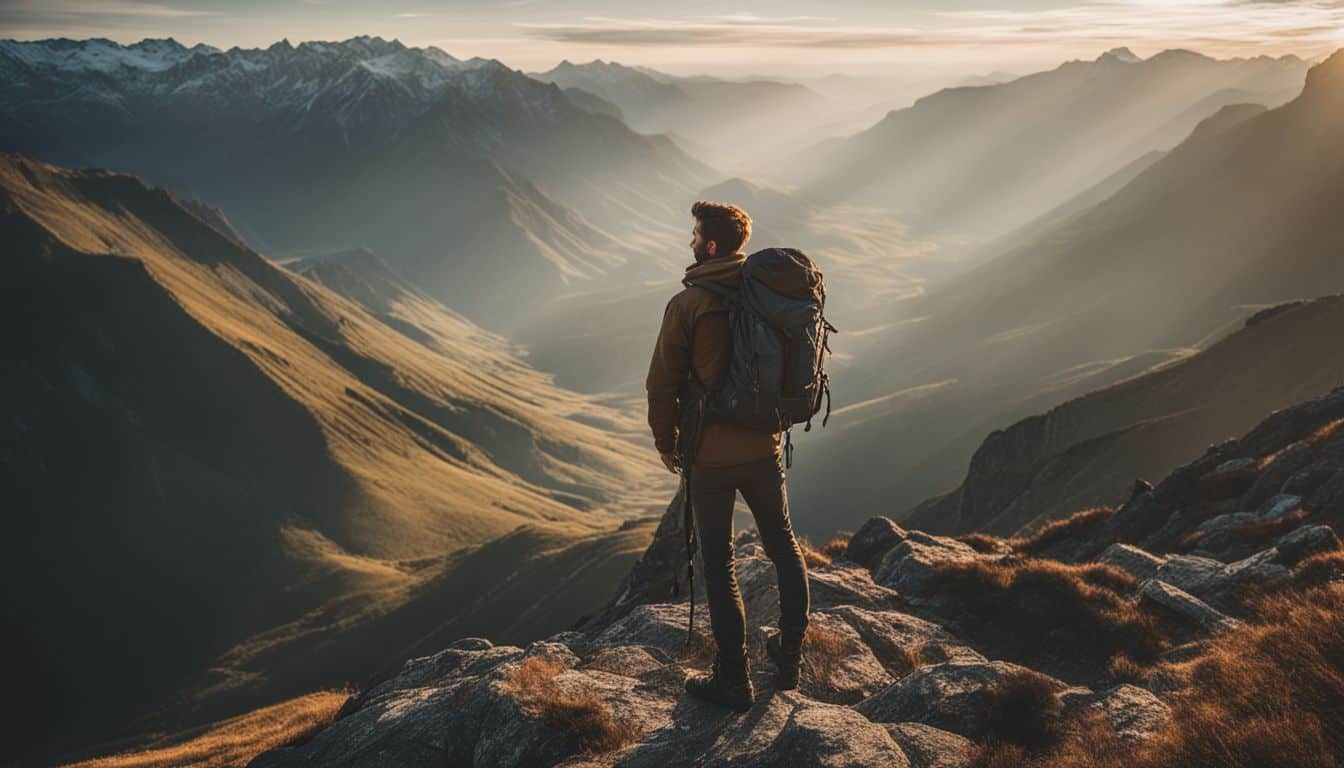
Bring an emergency kit and a charged power bank
When hiking alone, it’s important to be prepared for unexpected situations. Here are some essential items to include in your solo hiking kit:
- Survival kit: Pack essentials like a compass, map, and multi-tool.
- Portable charger: Keep your electronic devices powered up during the hike.
- Sufficient food supply: Pack enough food to sustain you throughout the hike, including extra supplies in case of delays.
- Ample water: Stay hydrated by carrying enough water or a water filtration system.
- Appropriate clothing: Wear suitable clothes and bring additional layers for changing weather conditions.
- Extra layers: Prepare for temperature fluctuations by packing extra clothing layers.
- Navigation tools: Carry a map and compass to stay on track and prevent getting lost.
- Illumination device: Bring a flashlight or headlamp with spare batteries for visibility in low-light conditions.
- Medical kit: Include basic first aid supplies like bandages, pain relievers, and blister treatments.
- Safety whistle: Use a whistle to alert others in case of emergencies or if you need assistance.
Crucial Tips for Hiking Alone
Stay within your comfort zone and know your limits. Always be aware of your physical capabilities and be honest with yourself about what you can handle. Pushing yourself too hard can lead to injuries or getting lost on the trail.
Stay within your comfort zone and know your limits
Knowing your limits and staying within your comfort zone is essential when it comes to solo hiking. It’s important to understand what you’re comfortable with and not push yourself beyond that point.
Solo hiking can be a great way to challenge yourself, but it’s crucial to make sure you’re prepared for the journey ahead. By setting boundaries and being self-aware, you can assess the risks involved and make confident decisions along the way.
Remember, if at any point you start feeling uncomfortable or reach your limits, don’t hesitate to turn back. Your safety should always be the top priority during solo hikes.
Routinely check your surroundings and look back
Staying alert while hiking alone is really important. I always make sure to routinely check my surroundings and look back during my solo hikes. It helps me stay aware of any potential dangers or risks on the trail.
By staying vigilant, I can assess my surroundings and spot any possible threats or obstacles that I might have missed. This practice keeps me attentive and allows me to react quickly if there are any changes or dangers along the way.
So, remember to remain aware of your surroundings and regularly look back while hiking alone for a safer and enjoyable experience!
Avoid listening to music for better awareness
When hiking alone, it is important to stay aware of your surroundings. One way to improve awareness is by avoiding listening to music while on the trail. When you have headphones on or are focused on your favorite tunes, you may not hear approaching animals, other hikers, or changes in weather conditions.
By keeping your ears open and being fully present in the moment, you can better enjoy nature and ensure your safety during solo hikes. So, leave the music at home and embrace the sounds of nature instead!
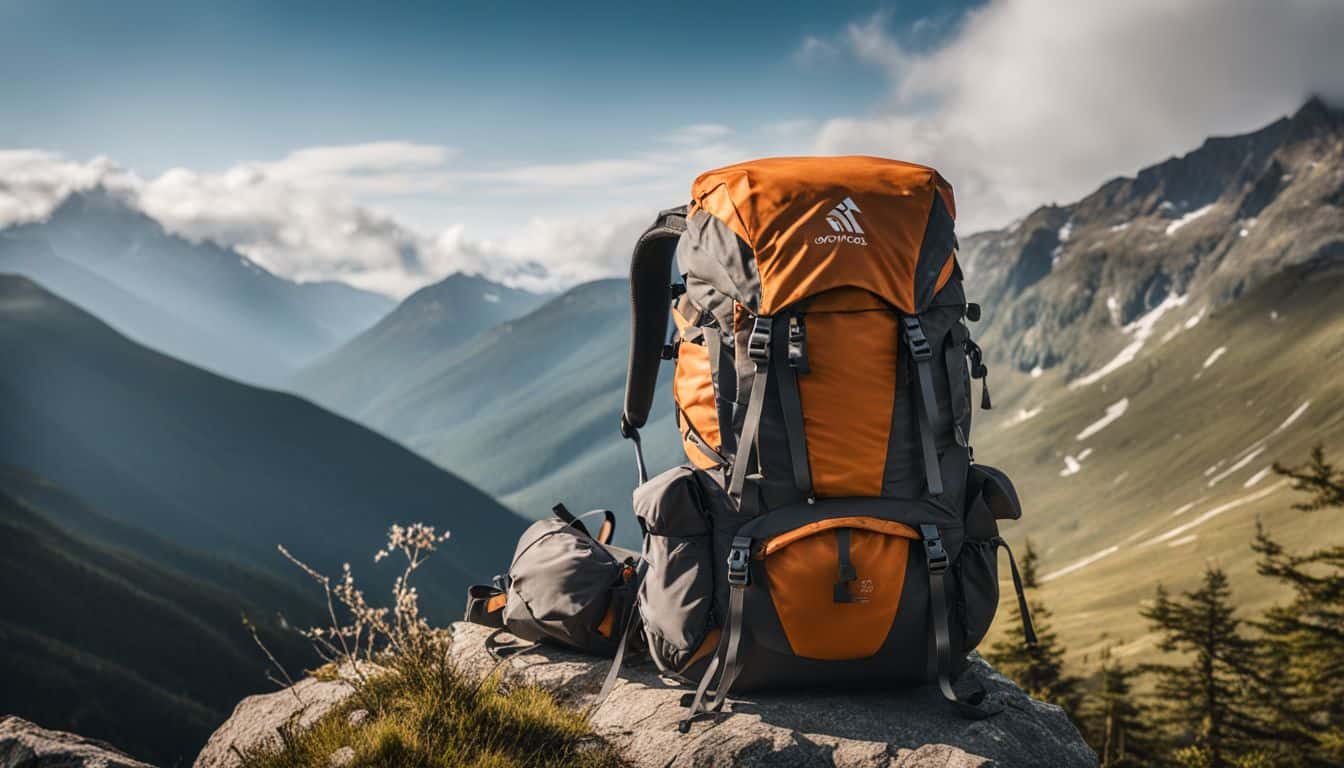
Benefits of Solo Hiking
Solo hiking offers the independence and freedom to explore at your own pace, building character and developing new skills along the way, while also fostering a deeper connection with nature.
Independence and freedom to hike at your own pace
Going on a solo hike gives you the independence and freedom to set your own pace. You don’t have to worry about keeping up with others or slowing them down. You can take breaks whenever you want, enjoy the scenery, or explore off the beaten path without feeling rushed.
It’s all about doing things at your own speed and truly enjoying the experience of hiking in nature. Plus, being alone allows you to fully immerse yourself in the surroundings and appreciate the beauty around you without any distractions.
So if you love having control over your hiking adventure and want to go at a pace that feels comfortable for you, solo hiking is definitely worth considering!
Building character and developing new skills
Solo hiking is not just about exploring nature and enjoying the solitude; it’s also an opportunity for personal growth. When you hike alone, you’re challenged to rely on yourself and make decisions independently.
This builds character and develops essential skills like problem-solving, self-confidence, and resilience. Moreover, solo hiking allows you to confront obstacles head-on and push past your comfort zone, ultimately leading to a greater sense of accomplishment.
It’s a transformative experience that can help you discover your strengths and unlock new abilities. So lace up your boots, hit the trails solo, and embrace the chance to build character while developing valuable skills along the way.
Enhanced connection with nature
When I go solo hiking, I feel a deeper connection with nature. Being alone in the great outdoors allows me to truly appreciate the beauty and wonder of the natural world around me.
The solitude and quietness create a peaceful and tranquil environment that is hard to find elsewhere. This connection with nature helps me gain a sense of self-confidence and wellbeing.
It also brings clarity to my thoughts and emotions, offering a break from any self-doubt or uncertainty that may be weighing me down. Solo hiking has allowed me to get closer to myself while immersing myself in the beauty of the natural world.
Planning for a Solo Hike
When planning for a solo hike, it is crucial to choose easier or popular trails, understand the trail conditions and difficulties, and check weather forecasts for a safe journey. Read on to discover more essential tips for an unforgettable solo hiking experience.
Choose easier or popular trails
When planning for a solo hike, it’s important to choose easier or popular trails. These types of trails are recommended for beginners or those who prefer a less challenging hike. Here are some reasons why choosing easier or popular trails is beneficial:
- Opt for a trail that is well – marked and easy to navigate for a first solo hike.
- Begin with shorter hikes during the day before attempting overnight journeys alone.
- Incrementally extend the distances covered during solo hiking.
- Choose popular routes or trails that are frequently traveled by other hikers.
- Prioritize trails that are maintained and regularly checked for safety.
- Start with beginner – friendly trails that have lower chances of getting lost.
- Consider well – established paths with clear signage for solo hiking trips.
- Take on hikes with increasing difficulty levels gradually as experience grows.
- Opt for trails with higher levels of foot traffic for added safety during solo hikes.
Understand the trail conditions and difficulties
Before embarking on a solo hike, it is crucial to have a clear understanding of the trail conditions and difficulties you may encounter. Researching the hiking trail beforehand will give you valuable information about its difficulty level, length, and potential challenges.
Seek advice from reliable sources like park rangers or experienced hikers who can provide accurate and up-to-date information about the trail conditions. By knowing what to expect, you can plan your hike accordingly and avoid pushing yourself beyond your comfort level or ability.
It’s important to be aware of your own capabilities and limitations to ensure a safe and enjoyable solo hiking experience.
Check weather forecasts for a safe journey
Checking the weather forecast before embarking on a solo hike is crucial for ensuring a safe journey. Knowing what to expect in terms of weather conditions can help you better prepare and make informed decisions.
For example, if rain or storms are predicted, it may not be ideal for beginners or those looking for an easier hike. On the other hand, clear skies can provide a more enjoyable experience.
By staying updated with the forecast, you can adjust your plans accordingly and take necessary precautions to ensure a successful and safe solo hiking adventure.
Comprehensive Guide to Solo Hiking Guidelines
Here is a comprehensive guide to solo hiking that will help you have a safe and enjoyable experience. First, it’s important to plan your hike well in advance. Choose trails that are popular and well-known, as they tend to have more resources available in case of emergencies.
Research the route thoroughly and familiarize yourself with any potential wildlife or hazards you may encounter along the way.
Next, make sure you come prepared with the right gear. Use navigation aids like maps or GPS devices to stay on track. Pack enough food, water, and appropriate clothing for the duration of your hike.
It’s also essential to bring an emergency kit with items such as first aid supplies, a whistle, and a charged power bank for your phone.
When hiking alone, it’s crucial to know your limits and stay within your comfort zone. Regularly check your surroundings and look back at where you’ve come from so you can easily find your way back if needed.
Avoid listening to music while hiking so that you can be fully aware of any sounds or signals around you.
Solo hiking has numerous benefits such as independence, building character, and developing new skills. You’ll have the freedom to hike at your own pace without having to worry about others’ preferences.
Plus, being alone in nature allows for a deeper connection with the environment around you.
Remember these guidelines when planning for a solo hike: choose easier or popular trails initially until you gain more experience; understand trail conditions and difficulties before embarking on each journey; regularly check weather forecasts beforehand for safer hiking conditions.
By following these comprehensive tips for solo hiking preparation, safety precautions during hikes itself plus appreciating its advantages – hikers can improve their overall solo hiking experiences significantly!
Preparing for a Solo Hike
Before venturing out alone, gain some hiking experience to build confidence and familiarize yourself with the essentials. Pack recommended items and travel light for easier mobility on the trail.
Gain some hiking experience before venturing alone
Before you set out on a solo hiking adventure, it’s important to gain some experience by joining group hikes or going with an experienced friend. By doing this, you’ll learn valuable skills and knowledge about trail navigation, outdoor preparation, and wilderness safety.
It will give you the confidence and know-how to handle different situations that may arise while hiking alone. Remember, solo hiking requires the same skills as hiking in a group, so taking the time to build your outdoor skills will ensure a safer and more enjoyable experience.
Pack the essential items recommended for solo hiking
When going solo hiking, it’s important to pack the right gear and supplies. Here are some essential items you should bring:
- Hiking footwear: Make sure you have sturdy and comfortable boots or shoes for the trail.
- Medical kit: Carry a first aid kit with basic supplies to handle any injuries or emergencies.
- Navigation tools: Bring a map, compass, or GPS device to help you find your way on the trail.
- Food and water provisions: Pack enough food and water to keep you energized and hydrated throughout your hike.
- Insulation clothing: Dress in layers and bring extra clothing for changing weather conditions.
- Emergency kit: Include items like a whistle, flashlight, fire starter, and emergency blanket in case of unexpected situations.
- Shelter equipment: Have a lightweight tent or tarp in case you need to set up camp for the night.
- Survival supplies: Carry essentials like a knife, rope, duct tape, and a multi-tool for various purposes.
- Outdoor gear: Don’t forget items like a backpack, trekking poles, sun protection (hat/sunglasses), insect repellent, and sunscreen.
- Safety items: Include personal locator beacons or satellite phones for communication in remote areas.
Travel light to ensure easier mobility
When preparing for a solo hike, it’s important to travel light so you can move around more easily. Carrying heavy backpacks can slow you down and make the hike more difficult. By packing only the essentials, like lightweight clothing, compact food and water supplies, and necessary safety equipment, you can reduce the weight on your back and increase your mobility on the trail.
It’s also helpful to use carry-on luggage or small backpacks that are designed for hiking. This way, you won’t have to worry about lugging around bulky bags or struggling with excessive weight.
So, remember to keep things minimal and prioritize mobility when packing for your solo hiking adventure.
Safety Tips for Solo Hiking
Ensure your personal safety by sharing your hiking plans with someone trustworthy, carrying a personal locator beacon or satellite phone, being alert of potential dangers and surroundings, and respecting your physical and mental limits.
Read more for comprehensive solo hiking guidelines to enhance your outdoor adventure experience.
Share your hiking plans with someone trustworthy
It’s really important to let someone you trust know about your hiking plans when you go solo. This way, if anything happens or if you don’t return on time, they will be aware and can take the necessary steps to help you.
Make sure to share your itinerary, including where you plan to hike and how long you expect it to take. It’s also a good idea to provide them with information about the trailhead location and any emergency contact numbers.
By doing this, you’re ensuring that there is someone looking out for your safety while you enjoy your hike alone.
Carry a personal locator beacon or satellite phone
For your safety while hiking alone, it’s crucial to carry a personal locator beacon or satellite phone. These devices are important tools that can help you call for help in case of emergencies.
Personal locator beacons (PLBs) allow you to send a one-way signal for assistance, while satellite phones provide two-way communication capabilities. Both options can be used to contact emergency services or loved ones if needed.
So, remember to bring these communication devices with you on your solo hikes to stay connected and ensure your well-being on the trails.
Be alert of potential dangers and surroundings
When hiking alone, it is crucial to stay alert and aware of your surroundings. This means paying attention to any potential dangers that may arise, such as uneven terrain, slippery surfaces, or unstable rocks.
Additionally, keep an eye out for wildlife encounters and be prepared to take necessary precautions if needed. Being vigilant can help you navigate through the hike safely and avoid any unnecessary risks.
Remember that your safety is a top priority, so always be mindful of potential hazards while enjoying your solo hiking experience.
Respect your physical and mental limits
As a solo hiker, it’s essential to respect your physical and mental limits. That means knowing what you can handle and not pushing yourself too hard. Understand your physical abilities, such as how long you can hike, the distance you can cover, or the elevation you can climb comfortably.
Recognize your mental capacity and be mindful of your emotional well-being while on the trail.
Taking care of your physical health is crucial during solo hikes. Listen to your body and know when to rest or pause if you feel tired or strained. It’s okay to take breaks and give yourself time to recover.
Don’t hesitate to seek help or assistance if necessary.
Similarly, being aware of your personal boundaries is important for maintaining a positive hiking experience. Set realistic goals that align with your fitness level and avoid pushing yourself beyond what feels comfortable for you mentally and physically.
Practice trail etiquette and leave no trace behind
When hiking alone or with friends, it is important to practice good trail etiquette and leave no trace behind. This means respecting the natural environment and minimizing our impact on it.
By following the principles of Leave No Trace (LNT), we can ensure that future hikers can also enjoy the beauty of nature. Some basic rules of hiking etiquette include staying on designated trails, properly disposing of waste, and being considerate towards other hikers by keeping noise levels down.
Remember, by practicing trail etiquette and leaving no trace, we can contribute to the preservation of our outdoor spaces for everyone to enjoy.
Enjoying the Solo Hiking Experience
Embrace the serenity of solitude and create lasting memories as you explore nature at your own pace. With breathtaking views and the freedom to immerse yourself in the beauty around you, solo hiking offers a unique experience that is not to be missed.
Discover more about how to make the most of your solo hiking journey by reading our comprehensive guide.
Embrace solitude and enjoy your own company
When you embrace solitude and enjoy your own company during solo hiking, it can be a transformative experience. Being alone in nature allows you to find inner peace, reflect on your thoughts and feelings, and discover more about yourself.
It’s a time for personal development and mental clarity. As Jay Shetty teaches, solitude can be a source of strength and wellness. So, don’t hesitate to embark on solo hikes where you can fully immerse yourself in the beauty of nature while enjoying the serenity that comes with being alone.
Take your own photos and capture memories
When hiking alone, taking photos can be a great way to capture memories and enhance your solo hiking experience. As you explore the beautiful trails, remember to bring along the right equipment like a camera or your phone.
Taking pictures of trail junctions can also help you remember the way back when retracing your steps. Just make sure to hold onto your backpacks or trekking poles for stability while finding a comfortable posture for snapping those amazing shots.
Whether it’s capturing breathtaking landscapes or candid moments on the trail, photography adds an extra layer of enjoyment to your solo hiking adventure. So go ahead, take your own photos and create lasting memories of your hikes!
Be friendly and respectful towards fellow hikers
When hiking alone, it’s important to be friendly and respectful towards fellow hikers. Greeting them with a smile or a friendly hello creates a sense of warmth and camaraderie on the trail.
Practicing good trail etiquette, such as yielding to faster hikers or staying on designated trails, shows respect for others and the natural environment. Being aware of your surroundings and keeping noise levels to a minimum can help preserve the tranquility of the hiking experience for both yourself and others.
Offering assistance or lending a helping hand to fellow hikers in need can foster a sense of community on the trail. Respecting the solitude and personal space of other hikers is essential, especially when hiking alone.
Conclusion on Solo Hiking Guidelines
In conclusion, solo hiking can be a rewarding and enjoyable experience if you prioritize safety and preparation. By following these 13 top tips for improvement, such as choosing well-known trails, researching routes in advance, and packing essential gear, you can enhance your solo hiking adventure.
Remember to always respect your limits and stay aware of your surroundings while immersing yourself in the beauty of nature. Happy hiking!
FAQs on Solo Hiking Guidelines
1. Is it safe to go solo hiking?
Solo hiking can be safe if you take proper precautions, such as researching your trail, carrying essential supplies, and informing someone about your plans.
2. What are the essential items I should bring for solo hiking?
Essential items for solo hiking include a map and compass, plenty of water, snacks or meals, a first aid kit, appropriate clothing and footwear, sunscreen, and a fully charged phone with emergency numbers saved.
3. How do I stay safe from wildlife while solo hiking?
To stay safe from wildlife during solo hikes: make noise to alert animals of your presence; store food in bear-proof containers; avoid approaching or feeding wild animals; learn about animal behavior before venturing into their habitat.
4. What should I do if I get lost while solo hiking?
If you get lost while solo hiking: stop walking and stay calm; use a whistle to signal for help; try to retrace your steps or follow natural features like rivers or ridges back to familiar territory; if unable to find your way back within a reasonable time frame, call emergency services.
5. Can I listen to music while solo hiking?
It is not recommended to listen to music while solo hiking as it can distract you from being aware of potential dangers and nature sounds that may alert you of nearby animals or hazards

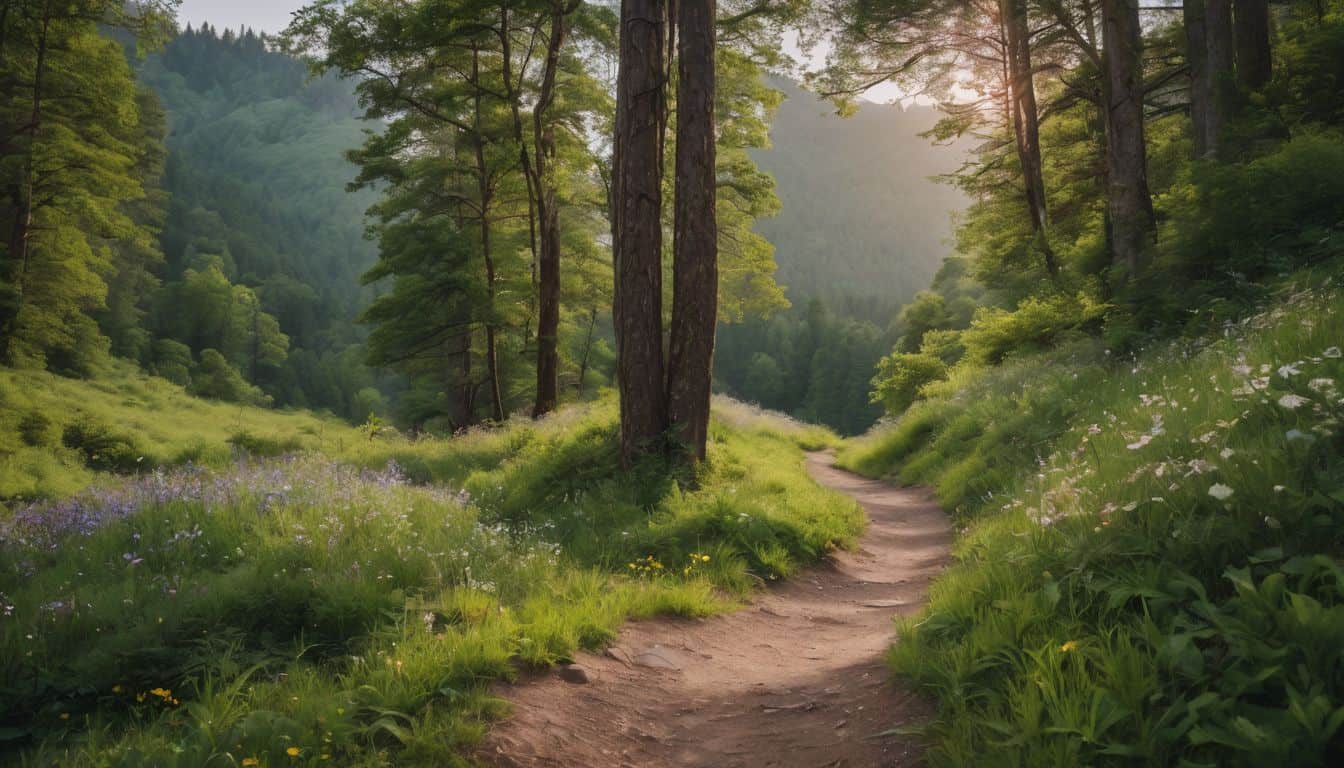
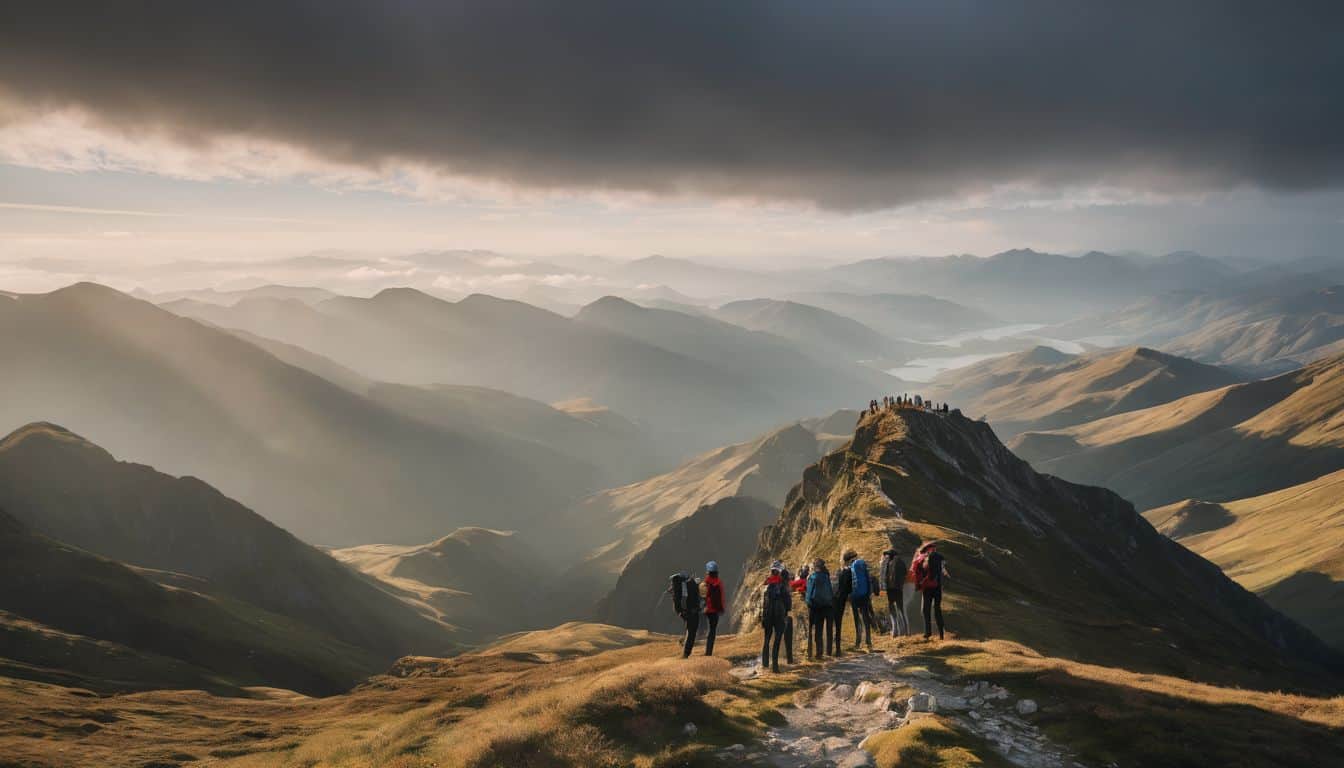
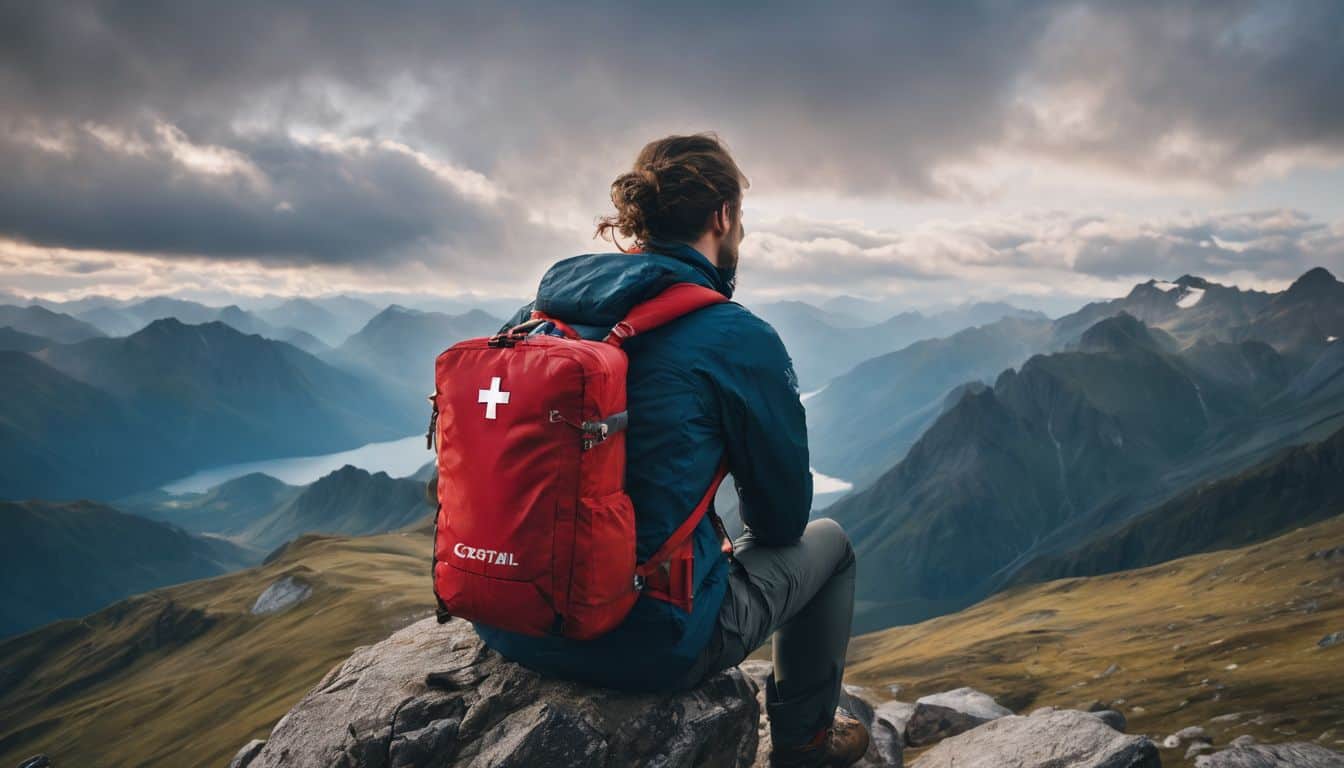
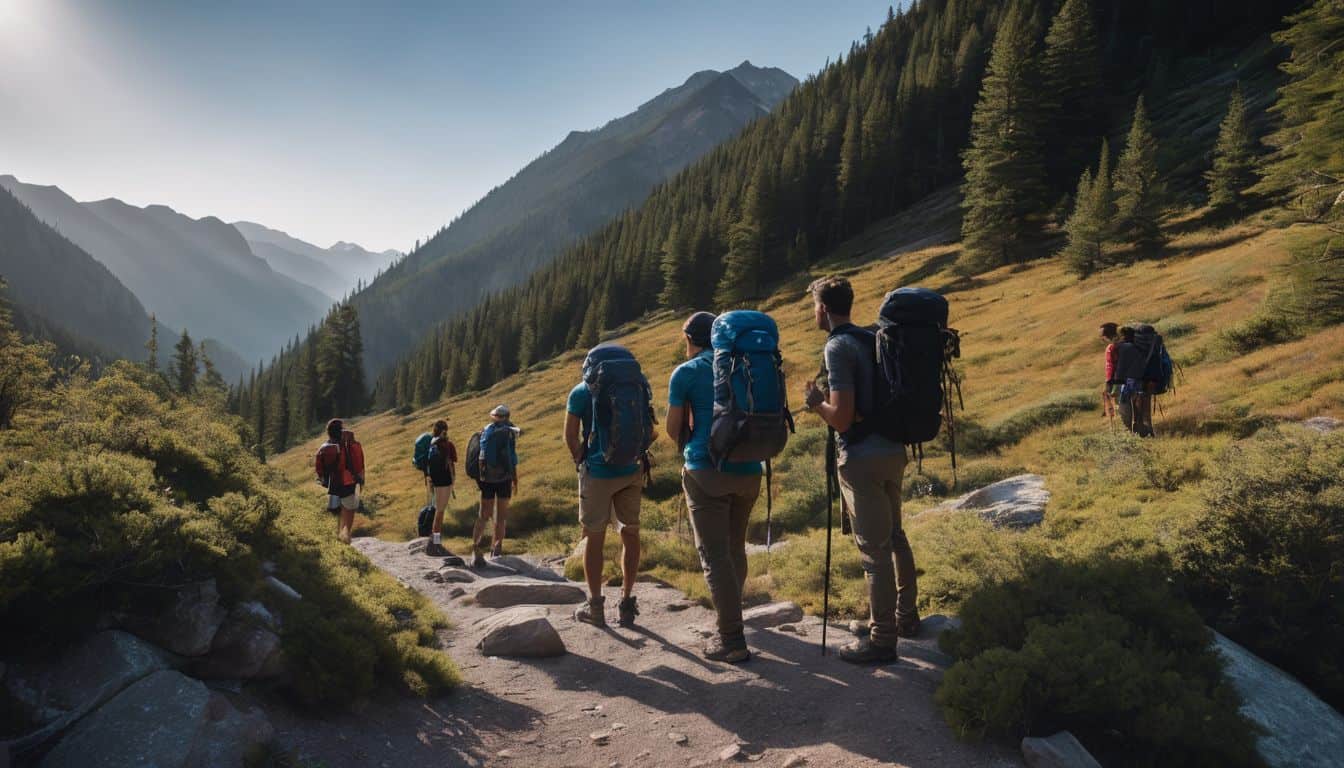
Leave a Reply